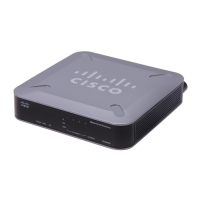SUMMARY STEPS
1.
configure
2.
interface ServiceInfra value
3.
service-location node-id
4.
ipv4 address address/mask
5.
end or commit
6.
reload
DETAILED STEPS
PurposeCommand or Action
Enters global configuration mode.configure
Example:
RP/0/RP0/CPU0:router# configure
Step 1
Configures the infrastructure service virtual interface (SVI) as 1 and
enters CGN configuration mode.
interface ServiceInfra value
Example:
RP/0/RP0/CPU0:router(config)# interface
ServiceInfra 1
RP/0/RP0/CPU0:router(config-if)#
Step 2
Configures the location of the CGN service for the infrastructure SVI.
service-location node-id
Example:
RP/0/RP0/CPU0:router(config-if)#
service-location 0/1/CPU0
Step 3
Sets the primary IPv4 address for an interface.
ipv4 address address/mask
Example:
RP/0/RP0/CPU0:router(config-if)# ipv4
address 1.1.1.1/30
Step 4
Saves configuration changes.end or commit
Example:
RP/0/RP0/CPU0:router(config-if)# end
or
RP/0/RP0/CPU0:router(config-if)# commit
Step 5
•
When you issue the end command, the system prompts you to
commit changes:
Uncommitted changes found, commit them before exiting
(yes/no/cancel)?
[cancel]:
◦
Entering yes saves configuration changes to the running
configuration file, exits the configuration session, and returns
the router to EXEC mode.
◦
Entering no exits the configuration session and returns the
router to EXEC mode without committing the configuration
changes.
Cisco IOS XR Carrier Grade NAT Configuration Guide for the Cisco CRS Router, Release 5.2.x
OL-32659-01 25
Implementing Carrier Grade NAT on Cisco IOS XR Software
Getting Started with the Carrier Grade NAT

